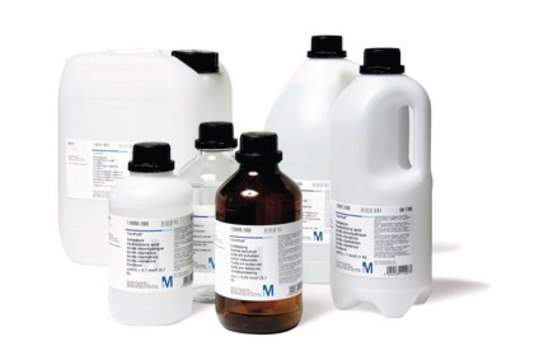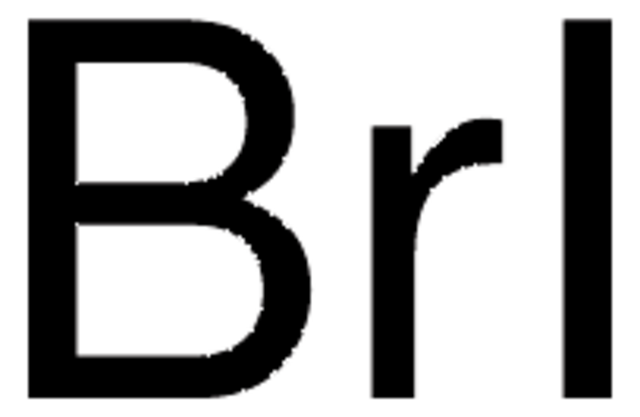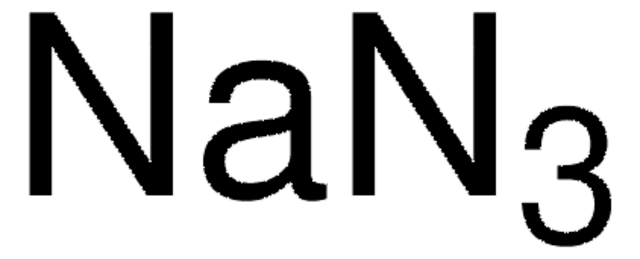291048
Iodine monochloride solution
1.0 M in methylene chloride
Synonym(s):
Chloroiodide solution, Wijs solution
Sign Into View Organizational & Contract Pricing
All Photos(2)
About This Item
Linear Formula:
ICl
CAS Number:
Molecular Weight:
162.36
Beilstein:
3587194
MDL number:
UNSPSC Code:
12352300
PubChem Substance ID:
NACRES:
NA.55
form:
liquid
Recommended Products
form
liquid
Quality Level
concentration
0.95-1.10 M (by Na2S2O3, titration)
1.0 M in methylene chloride
density
1.42 g/mL at 25 °C
SMILES string
ClI
InChI
1S/ClI/c1-2
InChI key
QZRGKCOWNLSUDK-UHFFFAOYSA-N
Looking for similar products? Visit Product Comparison Guide
Signal Word
Danger
Hazard Statements
Precautionary Statements
Hazard Classifications
Carc. 2 - Eye Dam. 1 - Skin Corr. 1B - STOT SE 3
Target Organs
Central nervous system
Storage Class Code
6.1B - Non-combustible acute toxic Cat. 1 and 2 / very toxic hazardous materials
WGK
WGK 3
Flash Point(F)
Not applicable
Flash Point(C)
Not applicable
Regulatory Information
危险化学品
Choose from one of the most recent versions:
Already Own This Product?
Find documentation for the products that you have recently purchased in the Document Library.
Cation radicals as intermediates in aromatic halogenation with iodine monochloride: solvent and salt effects on the competition between chlorination and iodination.
Hubig SM, et al.
The Journal of Organic Chemistry, 59(21), 6233-6244 (1994)
Ahmed Khalil et al.
Nucleosides, nucleotides & nucleic acids, 33(12), 786-799 (2014-11-06)
The reaction of thymidine, 3-mono-, and 3,3',5'-trialkylsubstitued thymidine analogues with iodine monochloride (ICl) was investigated. Treatment with ICl resulted in rapid deglycosylation, anomerization, and isomerization of thymidine and 3-substituted thymidine analogues under various reaction conditions leading to the formation of
Ultrasonic-assisted synthesis of flavones by oxidative cyclization of 2'-hydroxychalcones using iodine monochloride.
Lahyani A and Trabelsi M.
Ultrasonics Sonochemistry, 31, 626-630 (2016)
Polymethylbenzene complexes of iodine and iodine monochloride.
Andrews LJ and Keefer RM.
Journal of the American Chemical Society, 74(18), 4500-4503 (1952)
A Gafni
Biochimica et biophysica acta, 742(1), 91-99 (1983-01-12)
Rat muscle glyceraldehyde-3-phosphate dehydrogenase was reacted with two reagents aimed at the highly reactive cysteine-149 residue in the active site of the enzyme. The enzyme was rapidly inactivated by iodine monochloride. Complete inactivation occurred when approx. 6 mol ICl were
Our team of scientists has experience in all areas of research including Life Science, Material Science, Chemical Synthesis, Chromatography, Analytical and many others.
Contact Technical Service






